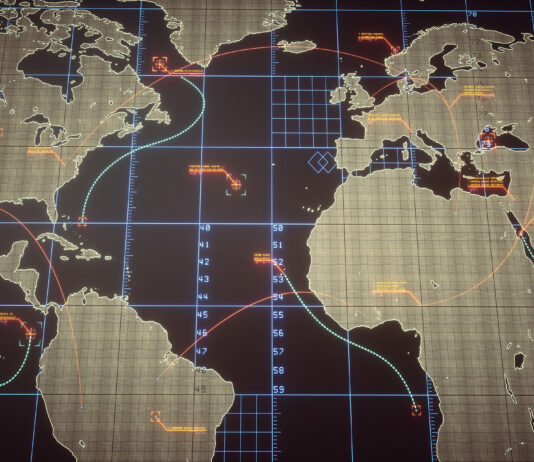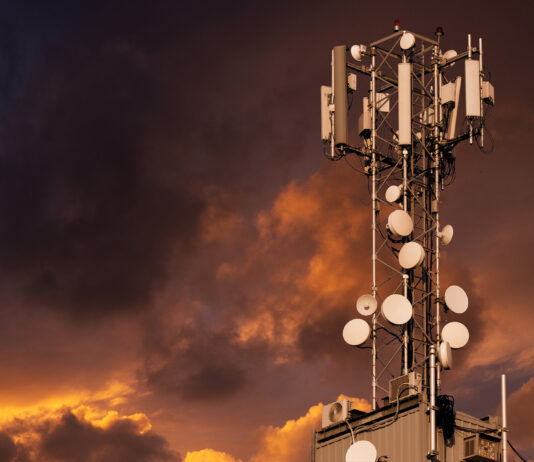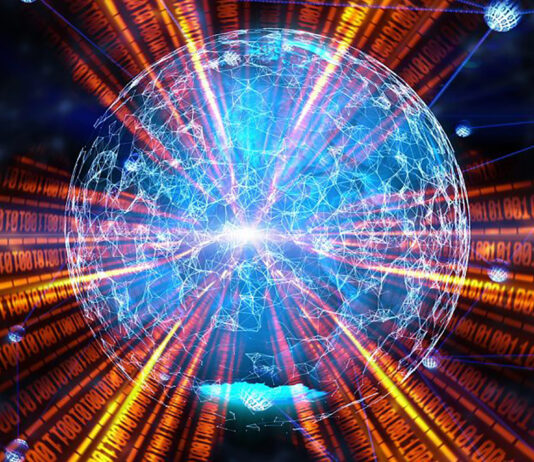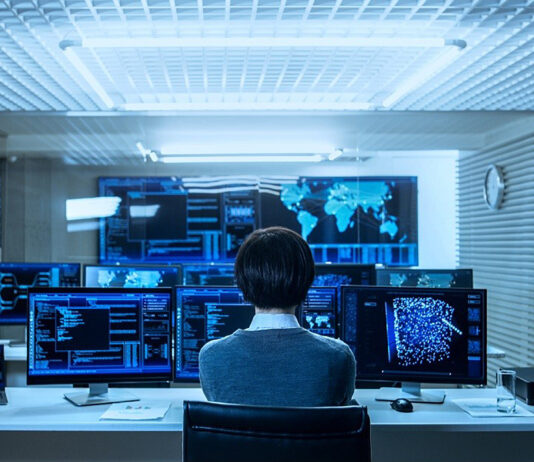In 1956, at a workshop on the campus of Dartmouth College, in Hanover, New Hampshire, the field of artificial intelligence (AI) was born. Attendants were buoyant. MIT cognitive scientist Marvin Minsky was quoted as saying, "Within a generation the problem of creating 'artificial intelligence' will substantially be solved."
This prediction turned out to be over zealous, but Minsky and his colleagues believed it wholeheartedly. What, then, is different today? What makes the current dialogue about AI more relevant and believable? How do we know that this is not another case of humans over estimating the development of technology?
For one thing,...
Not even 30 years separate us from the end of the Cold War. Yet, we appear to be witnessing the emergence of a new one, a technology Cold War between the United States and China. This time, instead of a ‘red under the bed’, the US government has declared there is one at the back door. It accuses Chinese technology companies of deliberately building vulnerabilities into their tech, allowing the Chinese to access and control the 5G critical infrastructure, and through it the connected devices and machinery at will.
Headlines are dominated by the case against Huawei, and debate continues...
Emerging Technology and Geopolitics of 5G
There are several reasons emerging technology is a highly competitive industry, notwithstanding the race for intellectual property that can be licensed by burgeoning markets for revenue. A first-mover advantage is often a way to lock in relationships that can lead to long-term infrastructure commitments, integration support services, and service delivery platform development. As the adage goes, “Whoever owns the platform, owns the customer.” This race to be the first to establish technological platforms and lock-in their customers is increasingly becoming politicized. And 5G, the next generation of cellular mobile communications technology, is the best...
Don’t let the “5G” in the title confuse you. This post is not only about the telcos’ core networks, but about the 5G security and privacy issues in our (very) near, and very different future that 5G will enable. In the 5G-enabled massive Internet of Things (mIoT) world we’re about to find ourselves in, we are expected to have 1000 devices connected for every person… These devices will be the components of the ‘5G operating system’ for our smart cities, our industry 4.0, our smart homes, smart transportation, smart healthcare, and much more. To enable this future, we will...
More than half of the world’s population lives in cities. The UN estimates that by 2050 that proportion will be 68% - more than 6 billion people living in high-density conditions. This raises significant challenges. What is the best way to ensure that human needs are met in a fair and equitable way? How will we face challenges like resource strain, waste and pollution management, traffic congestion and connectivity?
In response to these wicked problems, cities are increasingly relying on smart technologies to foster greater efficiency and sustainable growth. These interventions do not, however, come without their own complications. Just...
Getting smart about security in smart systems
Smart used to be something we called people or pets. It wasn't a term one would use to describe one's hairbrush. That is changing, of course, in an era of accelerating digital transformation. Now we have smart homes, smart cities, smart grids, smart refrigerators and, yes, even smart hairbrushes. What's not so smart, though, is the way the cybersecurity and cyber-kinetic security risks of these systems are often overlooked, and with new horizon technologies like 5G, these problems are set to grow exponentially.
Cyber-physical systems and the smartification of our world
Cyber-connected objects have become...
Cybersecurity strategies need to change in order to address the new issues that Machine Learning (ML) and Artificial Intelligence (AI) bring into the equation. Although those issues have not yet reached crisis stage, signs are clear that they will need to be addressed – and soon – if cyberattackers are to be prevented from obtaining a decided advantage in the continuing arms race between hackers and those who keep organizations’ systems secure.
ML and AI can magnify existing vulnerabilities and open the door to new attack strategies. At the same time, though, they offer new tools to help organizations secure...
As IoT adoption continues to proliferate, manufactures and adopters are increasingly aware of cybersecurity risks to IoT. Yet, even among the IoT security professionals, one significant potential remote attack vector is often overlooked: intentional electromagnetic interference (IEMI).
Electromagnetic interference (EMI) surrounds us – natural causes, such as solar flares and lightning; and man-made sources such as radio and TV broadcasting, radars, microwaves and many others all emit electromagnetic waves that could disrupt operation of electrical and electronic devices. That is, if devices wouldn’t comply with numerous electromagnetic compatibility (EMC) standards which ensure correct operation in common electromagnetic environment and resilience...
Targeted cyberattacks against critical infrastructure (CI) are increasing on a global scale. Critical systems are rapidly being connected to the internet, affording attackers opportunities to target virtual systems that operate and monitor physical structures and physical processes through various modes of cyberattack.
When people think of cyberattacks, their minds often go first to the financial sector. After all, that’s the type of attack people hear about most frequently; it’s where the money is and it’s what seems most natural for cybercriminals to target. Enterprises frequently focus on such cyber-enabled financial crimes to the point that they give too little thought...
While Stuxnet is gone, the world now knows what can be accomplished through cyber-kinetic attacks.
As we approach the 10th anniversary of when Stuxnet was (likely) deployed, it is worthwhile to examine the effect it still has on our world. As the world’s first-ever cyberweapon, it opened Pandora’s box. It was the first true cyber-kinetic weapon – and it changed military history and is changing world history, as well. Its impact on the future cannot be overstated.
Stuxnet’s beginnings
Stuxnet is believed to have been conceived jointly by the U.S. and Israel in 2005 or 2006 to cripple Iran’s nuclear weapon development...
In their growing efforts to increase efficiencies through digitization and automation, railways are becoming increasingly vulnerable to cyber-kinetic attacks as they move away from strictly mechanical systems and bespoke standalone systems to digital, open-platform, standardized equipment built using Commercial Off the Shelf (COTS) components.
In addition, the increasing use of networked control and automation systems enable remote access of public and private networks. Finally, the large geographical spread of railway systems, involving multiple providers and even multiple countries, and the vast number of people involved in operating and maintaining those widespread systems offer attackers an almost unlimited number of attack...
As our cities, our transportation, our energy and manufacturing – our everything – increasingly embrace Internet of Things (IoT) and Industrial Controls Systems (ICS), securing its underlying cyber-physical systems (CPS) grows ever more crucial. Yet, even among engineers and cybersecurity specialists, one potential attack trajectory is often overlooked: Intentional Electromagnetic Interference (IEMI).
ICS and IoT – digital systems that run today’s modern society – rely on changes in electrical charges flowing through physical equipment. Creating the 1s and 0s of which all digital information is composed requires electronic switching processes in circuits. The current used in this process is not...
The maritime industry faces a not-so-distant future when ships will be completely autonomous, using navigation data that they receive to plot their own courses with only minimal input from shoreside control centers. The efficiencies this could bring are massive, but before this happens, cybersecurity issues must be addressed. Not only are many vessels configured in ways that invite cyberattacks, but security practices also need to be improved before the industry can safely navigate its future.
An increasingly digitized maritime industry
A fleet of 250 autonomous vessels may launch soon. And that would be only the beginning, according to McKinsey and Co....
Stuxnet was the first true cyber-kinetic weapon, designed to cripple the Iranian – and perhaps also the North Korean – nuclear weapon programs. It succeeded in slowing the Iranian program, although it was discovered before it could deal the program a fatal blow.
Its significance goes far beyond what it did. It marks a clear turning point in the military history and cybersecurity. Its developers hoped for a weapon that could destroy strategic targets without civilian damage possible in traditional warfare. Instead, it opened the door to cyberattacks that can deliver widespread disruption to the very civilian populations it was...
The open seas have long attracted those who yearned for adventure. The risk of pitting oneself against a vast and unforgiving sea has tested sailors’ mettle for millennia. It’s not surprising that the maritime industry is one that thrives on facing – and overcoming – risks. But, as technology increasingly dominates it, growing risks exist that the industry dare not ignore.
Its growing effort to increase efficiencies through digitization and automation has made it an inviting target for 21st century pirates whose weapons are not cutlasses, but computers. Vulnerabilities in maritime systems and security practices threaten to inflict huge losses...


















